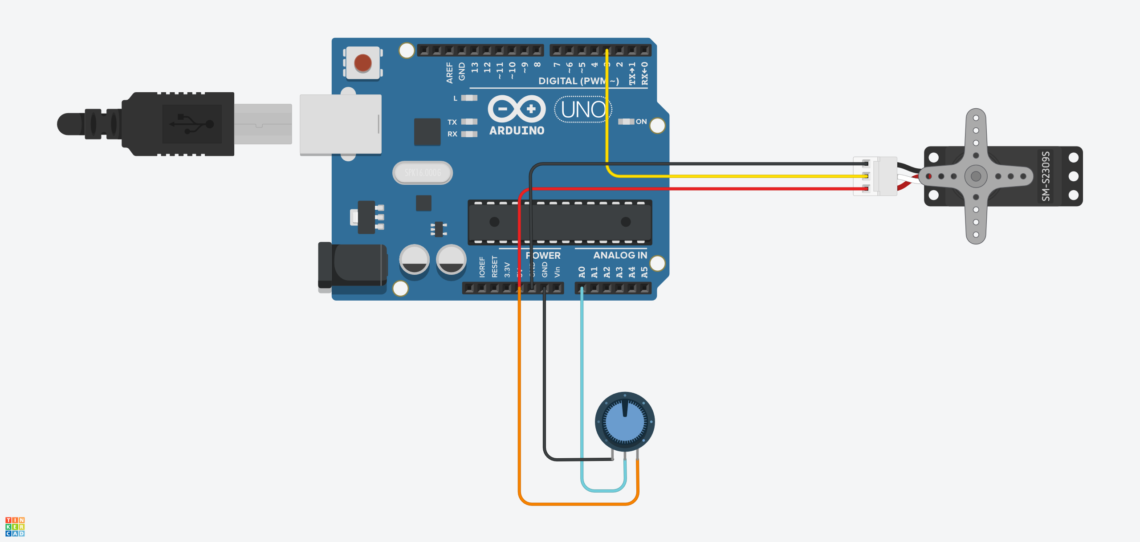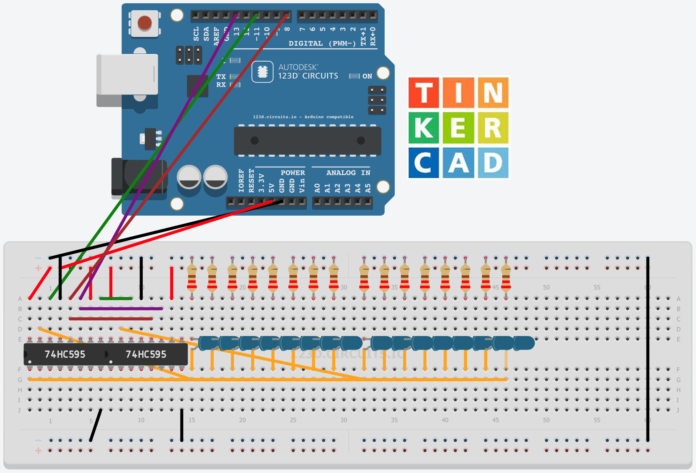This is a free CAD-platform for beginners which is very easy to use, but doesn’t have many features.
Recently, we became aware of something called Tinkercad Circuits (“TC” henceforth), which is more aimed towards electronic circuits and Arduino coding rather than mechanical design, while still keeping the “for-beginners” profile.

A very simple circuit in TC with only a potentiometer and a servo hooked up to an Arduino Uno. The Arduino code interface can be viewed further down.
TC actually has a lot going for it, and we’ll look at different aspects of it in this blog post. This is not a review, merely a first impression of TC.
The General Purpose of TC
In TC you can hook a wide array of electrical components together, program an Arduino and simulate analog and digital behavior. Everything has a very intuitive and visual interface and it’s easy to just dive into it and start tinkering with a circuit. The simulations have some fun animations and sounds and, every component is nicely depicted.
TC is free to use (you do need an Autodesk account) and runs directly in your web browser.
Who Is This For?
Many beginners in embedded electronics may find TC as a nice tool for different purposes.
We can imagine that this can be used in pre-university education for introducing students to electronics and coding in a virtual low-effort, low-risk and low-cost environment.
Makers and DIYers who are new to embedded electronics can use this to learn about embedded systems, plan their next project or even generate their actual Arduino code (more on that later).
Components
The component library is larger than we expected, and sorted into different categories.
Final Thoughts
Tinkercad Circuits surpassed our expectations since we weren’t that impressed by the original Tinkercad three years ago.
- Component selection: pretty good. There are many components to choose from, but it could always be more. 🙂
- Simulation: OK. Microcontroller simulation and simple circuitry works well, but it is pretty simplified and sometimes it can’t handle even relatively simple analog circuits.
- Coding features: good. An intuitive visual coding method with a pretty good functionality selection. Serial monitor, serial plotter and libraries are big pluses.
- General interface: pretty good. Easy to learn and use in general. Nice graphics and animations. Undo/redo functions for coding as well as more window resizing possibilities would be nice.
All in all, TC seems like a really nice platform for those people it is made for. Those of us who are a bit more versed in embedded system design should look elsewhere for useful software. We might, however, use this to later illustrate simple circuits on our blog, for instance.
Thumbs up!
End Of Post

































